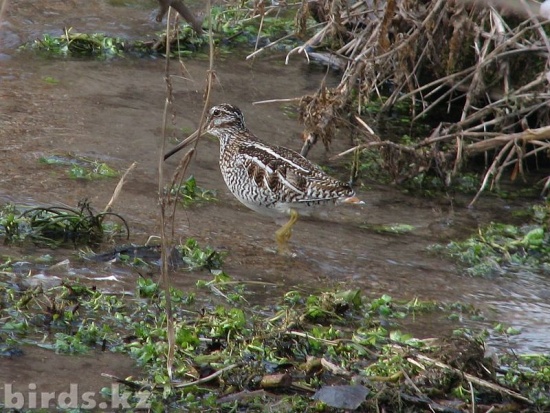- Gallinago solitaria
Identification
29-31 cm
- Upperparts, head and neck:
- streaked with brownish stripes
- pale feather edges form lines down the back
- White face
- Gingery breast
- White belly with brown barring on the flanks
- Bill:
- brown and black
- long, straight and fairly slender
- Legs and feet are yellowish-green to brown
Sexes are similar; females are larger
Distribution
Eastern and central Asia, in eastern Russia, Kazakhstan, Kyrgyzstan and Mongolia.
Taxonomy
Subspecies
Two subspecies are recognized:[1]
- G. s. solitaria:
- G. s. japonica:
Habitat
River valleys, mountain bogs, marshes and swamps.
Behaviour
Breeding
Its nest is saucer-shaped and made of dry grass, hidden in a dense tuft of grass or sedges.
Diet
It forages by pushing its long bill deep into the mud seeking invertebrates, such as insects and worms, seeds and plants.
References
- Clements, J. F., T. S. Schulenberg, M. J. Iliff, B.L. Sullivan, C. L. Wood, and D. Roberson. 2012. The eBird/Clements Checklist of Birds of the World. 6th ed., with updates to October 2012. Ithaca: Cornell Univ. Press. ISBN 978-0801445019. Spreadsheet available at http://www.birds.cornell.edu/clementschecklist/downloadable-clements-checklist
- Wikipedia
Recommended Citation
- BirdForum Opus contributors. (2025) Solitary Snipe. In: BirdForum, the forum for wild birds and birding. Retrieved 11 May 2025 from https://www.birdforum.net/opus/Solitary_Snipe
External Links
GSearch checked for 2020 platform.1




